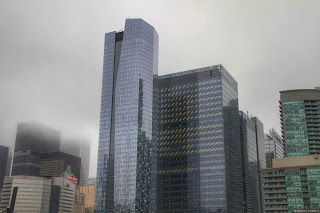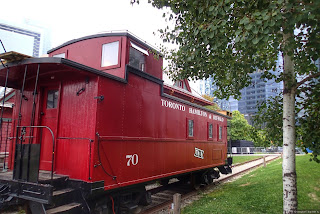The Hurons believed that this was only their “Meeting
Place”. The Mohawks also claimed the title of abroiigen and believed that here
"Trees grow out of water." The villages of the Iroquois, Seneca, and
Mississauga were spread out here and there, and also had their names, not very
carefully preserved by capricious History. However, the latter did not like to
live long in one place, turned down their wigwams and moved to a new place
around the Great Lakes.
And again, everything changed in the usual course of
time and events, as soon as the pale faces came to the shores of the lakes. A
piece of land was bought for what kind of money and Indian Tkaronto gave the
name of the capital of Upper Canada - Toronto.
The history of the city was not particularly
remarkable - the city grew, then captured by the enemy, again returned to the
rightful owners ... And who knows what Toronto would be like now, if not for
the loss of Montreal influence and the outflow of the English-speaking
population. Business also went to Toronto, and immigration after World War II
did its job.
Our journey from the
Thousand Islands was in Toronto. And the closer we approached, the more severe
the weather became: the skies frowned, heavy fat clouds clung to the saddened
belly with the belly, fragments of ash mists stuck to the glass. The city was
preparing a very joyful meeting guests. I don’t know what angered the capital
of Ontario, but heaven did not promise a warm welcome.With the hope of the mercy of the Canadian gods who control the weather, we went to bed late at night, when you could only see the wrong light of lanterns. With even more hope, I rushed to the window in the morning. Plans to climb the CN Tower collapsed and broke into the smallest fragments - the city was wrapped in a dense fog.
In no other city in the world does so many different nationalities live side by side, while completely ignoring it and learning to make friends regardless of the notorious fifth item and skin color. A completely multi-ethnic city, with a mixture of cultures, languages and traditions. After a couple of hours of walking around Toronto, you stop paying attention to it and perceive it as the most common and usual fact. To say that I liked it - to say nothing! This is the perfect picture of the world for me. What is the reason for such a peace-loving coexistence - active immigration or an abundance of student youth - is hard for me to say, but I think it all came together.
Toronto is the most "skyscraper" city of Canada, from what I have seen. And at the same time - no less green. Thrift and care, with which they treat every tree and a flower in Toronto, cannot but arouse respect. Huge monsters of glass and concrete carefully parted, giving way to trees and squares. And of course, squirrels are masters here!
And there are a lot of dogs in Toronto! No, not those that are gathering in hunger packs and are ready to rummage for the sake of finding food in any landfill. Dogs in Toronto are loved. They are walking, they are spoiled, they are protected. To meet a dog without a leash is simply impossible! But the leash with a few dogs - easily.
Residents of the city are very fond of their lake Ontario and love to relax on its shores. True, in the summer. In the fall I almost never met them. But what surprised me was that I was wrapped in a windbreaker and trembling from the dank wind and damp fog, while the people were walking around in short-sleeved T-shirts and even the kids were running around with bare knees, not being afraid of catching cold and getting sick. Young Street is the longest street in the world, its length is 1896 km and it stretches from the embankment of Lake Ontario to the border with the United States. Once it was an Indian trail, later the discoverers of Canada walked along it. In the 19th century it was the most commercial street, the commercial center of the city with many shops. In my opinion, on this street the maximum accumulation of buildings of glass and concrete. To go through it all - the task is almost unsolvable.






No comments:
Post a Comment